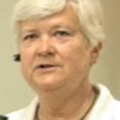NIOSH Makes Recommendations after Frederick County, MD, Battalion Chief Killed at Fire
"Tell my family I love them."
Those were the final words of Frederick County Battalion Chief Josh Laird nine minutes after he fell through the floor into a basement of a house on Aug. 11, 2021.
Laird, the officer on the first engine in, told dispatchers: Engine 251 is on-scene, large 3½, 2 ½ – story single family. We do have a working fire. Go ahead and start RIT and tanker task force.”
He fell through the floor as he advanced a line into the 5,375 square foot, two-story, colonial-style home with an unfinished basement. Investigators determined his crew had "separated" from him and were peforming other tasks.
Following an investigation, NIOSH investigators determined contributing factors:
• Low frequency/high risk incident
• Incident management system
• Crew integrity
• Initial rapid intervention crew (IRIC)
• Professional development
• Corrugated stainless-steel tubing (CSST) system
Following interviews with incident commanders and firefighters as well as listening to communications, NIOSH investigators made several recommendations.
- For low-frequency, high-risk incidents, fire departments should ensure ICs
implement an incident management system that prioritizes personnel accountability and
maintains effective incident communications. - Fire departments should ensure all companies operating on the fireground maintain crew integrity throughout the incident.
Companies can:
• Operate based on the assignment given by the IC
• Communicate critical incident benchmarks to the IC
• Deploy to rescue members during the initial stages of an incident
• Use a thermal imager during the scene size-up and while operating in the hazard zone. - Fire department SOPs/SOGs are consistently updated to ensure adequate
staffing and professional development opportunities to support skills and competencies to manage Type V and Type IV incidents. Possible opportunities and activities:
• Train all firefighters and fire officers in fireground survival procedures
• Conduct training on rural water supply operations
• Provide annual proficiency training and evaluation on fireground operations, including live fire training, to all members involved in emergency operations
• Train all members and dispatchers on the safety features of portable radios including the EAB
• Train on awareness of CSST and the hazards associated with it
NIOSH investigators also addressed the cause of the fire -- lightning caused the corrugated stainless steel tubing (CSST) to fail. The flames ignited nearby combustibles. The fire burned for an unknown time before being discovered.
They recommended: "Governing municipalities (federal, state, regional, and local) should develop and implement legislation which prohibits the use of corrugated stainless-steel tubing in residential, commercial, and industrial structures."
Since the fire that claimed the father of two daughters, Sara Laird, his wife, has teamed up with another widow, Celeste Flynn, who lost her husband three years earlier in nearby Howard County, MD.
The two have travelled around the country to promote changes to CSST regulations and the importance of firefighters getting training about basement fires.
The ATF conducted an analysis of the fires that both occurred in unsprinklered large houses with open floor plans.
"ATF personnel utilized engineering analysis methods including field fire testing, large-scale laboratory fire testing, advanced computer fire modeling and electronic data sources to assist with determining the origin and cause of the fire, the route of fire spread throughout the structure and the events that led to the firefighter MAYDAY and LODD," investigators wrote.
About the Author
Susan Nicol
News Editor
Susan Nicol is the news editor for Firehouse.com. She is a life member and active with the Brunswick Volunteer Ambulance & Rescue Company, Oxford Fire Company and Brunswick Vol. Fire Co. Susie has been an EMT in Maryland since 1976. Susie is vice-president of the Frederick County Fire/Rescue Museum. She is on the executive committee of Frederick County Volunteer Fire and Rescue Association. She also is part of the Maryland Institute for Emergency Medical Services Systems (MIEMSS) Region II EMS Council. Susie is a board member of the American Trauma Society, Maryland Division. Prior to joining the Firehouse team, she was a staff writer for The Frederick News-Post, covering fire, law enforcement, court and legislative issues.

